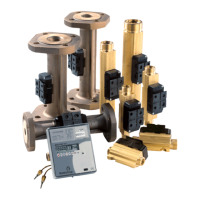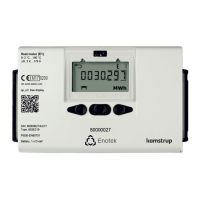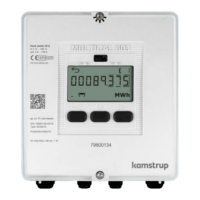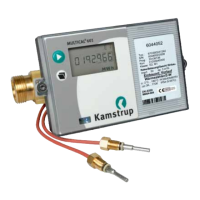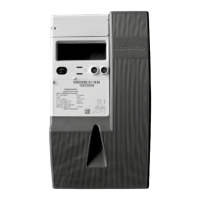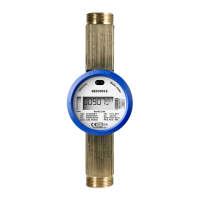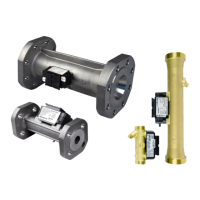MULTICAL® 403
Kamstrup A/S · Technical description · FILE100000166_B_EN-55121689_M1_07.2023
EE=12 Flow controlled tariff
If the current water flow (Q) exceeds TL2 but is lower than or equal to TL3, energy is counted in TA2 parallel to the
main register. If the current water flow exceeds TL3 but is lower than or equal to TL4, energy is counted in TA3
parallel to the main register. If the current water flow exceeds TL4, energy is counted in TA4 parallel to the main
register.
Q ≤ TL2
Accumulation in main register only
TL4 > TL3 > TL2
TL3 ≥ Q > TL2
Accumulation in TA2 and main register
TL4 ≥ Q > TL3
Accumulation in TA3 and main register
Q > TL4
Accumulation in TA4 and main register
Setting up data, TL3 must be higher than TL2 and TL4 must be higher than TL3.
The flow controlled tariff is e.g. used as a basis for the individual heat consumer’s connection fee. Furthermore, this
tariff type can provide valuable statistical data if the heating station considers new construction activities.
When either power or flow tariff is used you obtain an overview of the total consumption compared to the part of
the consumption used above tariff limits.
EE=13 t1-t2 tariff (∆Θ)
If the current t1-t2 (∆Θ) is lower than TL2 but exceeds or is equal to TL3, heat energy is counted in TA2 parallel to the
main register. If the current cooling becomes lower than TL3 but is higher than or equal to TL4, energy is counted in
TA3 parallel to the main register. If the current t1-t2 (∆Θ) is lower than TL4, energy is counted in TA4 parallel to the
main register.
∆Θ ≥ TL2
Accumulation in main register only
TL4 < TL3 < TL2
TL3 ≤ ∆Θ < TL2
Accumulation in TA2 and main register
TL4 ≤ ∆Θ < TL3
Accumulation in TA3 and main register
∆Θ < TL4
Accumulation in TA4 and main register
Setting up tariff limits, TL3 must be lower than TL2 and TL4 must be lower than TL3.
The t1-t2 tariff can be used as a basis for weighted user charge. Low ∆Θ (small difference between inlet and outlet
temperatures) is uneconomical for the heat supplier.

